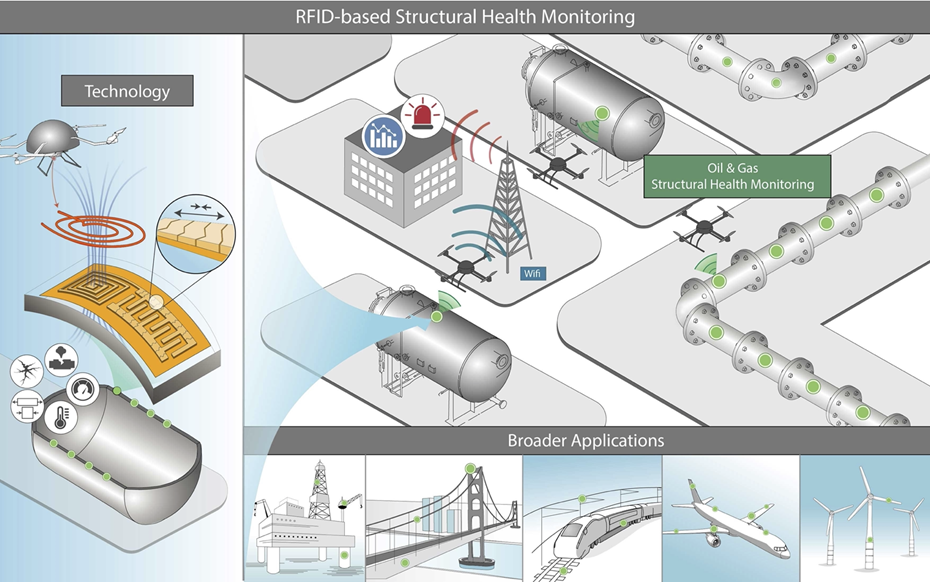3D printing of smart composites for wireless structural health monitoring

Project Details
Program
Mechanical Engineering
Field of Study
Composites, additive manufacturing, energy, structural integrity
Division
Physical Sciences and Engineering
Faculty Lab Link
Project Description
New composite infrastructure used for the energy transition (hydrogen energy, solar, wind) are facing enormous challenges when it comes to integrity and maintenance. We propose here to integrate within smart composites special sensing technologies, allowing the wireless control of these critical systems. The project will make large use of additive manufacturing at different scales.
About the Researcher
Gilles Lubineau
Professor, Mechanical Engineering
Affiliations
Education Profile
- Ph.D., Mechanical Engineering, A‰cole Normale SupA©rieure de Cachan, Paris VI University, 2002
- Postgraduate Degree, A‰cole Normale SupA©rieure de Cachan, 2000
- ""AgrA©gation,"" Theoretical Mechanics, 1999
- M.S., A‰cole Normale SupA©rieure de Cachan, 1998
Research Interests
ProfessorA Lubineaua's research simultaneously involves computational, modeling and experimental developments to tackle complex problems related to composite engineering and more generally to heterogeneous materials.A Lubineaua'sA research is focused on fourA key areas: Integrity of composite materials and structures.A Isotropic and anisotropic damage theories; fracture mechanics; homogenization techniques bridging micro-mechanical models to meso/macro-scale models; multi-scale modeling; and damage mechanisms in nano-reinforced multiscale composites.Durability of composite materials and structures; modeling of aging for polymer-based CFRPs under various environments (moisture, temperature, radiation, oxidation, mechanical fatigue); aging of steel pipes in sour environments; and theA development of multiphysics-related models (experimental, modeling and computational work).Inverse problems for the identification of constitutive parameters; digital image correlation-based identification techniques; identification techniques for interfaces in joints and laminates; and identification techniques based on 2-D (optical pictures) and 3-D (tomography) image correlation.Multiscale coupling techniques; coupling between non-local continuum and local continuum models; and upscaling strategies for handling localized effects in large-scale simulations.Selected Publications
- Hussein Nesser, Hassan A. Mahmoud, and Gilles Lubineau (2023). High-Sensitivity RFID Sensor for Structural Health Monitoring. Advanced Science. 2301807.
- Ahmed Wagih, Hassan Mahmoud, Ran Tao, Gilles Lubineau (2023). Towards Tough Thermoplastic Adhesive Tape by Microstructuring the Tape Using Tailored Defects. Polymers. v. 15(2), 259.
- Hussein Nesser and Gilles Lubineau (2021). Achieving Super Sensitivity in Capacitive Strain Sensing by Electrode Fragmentation. ACS Applied Materials and Interfaces. V 13(30), pp. 36062 a- 36070.
- Ran Tao, Xiaole Li, Arief Yudhanto, Marco Alfano, Gilles Lubineau (2020). Laser-based interfacial patterning enables toughening of CFRP/epoxy joints through bridging of adhesive ligaments. Composites Part A: Applied Science and Manufacturing. v 139, 106094.
- Ran Tao, Xiaole Li, Arief Yudhanto, Marco Alfano, Gilles Lubineau (2020) On controlling interfacial heterogeneity to trigger bridging in secondary bonded composite joints: An efficient strategy to introduce crack-arrest features. Composites Science and Technology. v 188, 107964.
- Jian Zhou, Guoqiang Tian, Gang Jin, Yangyang Xin, Ran Tao, and Gilles Lubineau (2020). Buckled Conductive Polymer Ribbons in Elastomer Channels as Stretchable Fiber Conductor. Advanced Functional Materials. v.30(5), 1907316
- Jian Zhou, Xuezhu Xu, Yangyang Xin, Gilles Lubineau (2018). Coaxial Thermoplastic Elastomer-Wrapped Carbon Nanotube Fibers for Deformable and Wearable Strain Sensors. Advanced Functional Materials. v 28(16), 1705591.
- Feia€¯Han,a€¯Gillesa€¯Lubineau,a€¯Yana€¯Azdoud (2016). Adaptive coupling between damage mechanics and peridynamics: A route for objective simulation of material degradation up to complete failure. Journal of the Mechanics and Physics of Solids. v 94, pp. 453-472.
Desired Project Deliverables
- report
- prototype
Recommended Student Background
Mechanical engineering
Electrical engineering